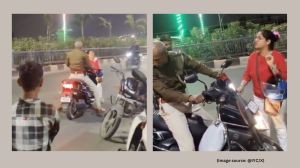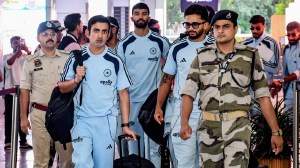The First Familys Celluloid Travels
Arun Kuckrejas new short film My Dear Nehru aims to showcase the impact that Indias First Family had on shaping the nation
Arun Kuckrejas new short film My Dear Nehru aims to showcase the impact that Indias First Family had on shaping the nation
An archived picture of Pandit Jawaharlal Nehru trying his hand at cricket,Indira Gandhi at her address in Red Fort,and Rajiv Gandhis steely determination as he went about quietly working as the Prime Minister. The photographs are plastered in different sections,with a slow classical piece by Pandit Ravi Shankar playing in the background,constitute the plot of filmmaker Arun Kuckrejas latest short film My Dear Nehru. The title is inspired by a letter that Sir Winston Churchill wrote to Nehru. The story,on the other hand,details the lives of the three prime ministers from the countrys first family,their respective contributions to India and also their deaths all told through photographs and voice recordings of them and voice-over by Vijaylaxmi Pandit.
Along with his son Raghav,an acting graduate from the Film and Television Institute of India (FTII) who is the films assistant director,Kuckreja researched for almost six months before starting the project. The 32-minute film will release later this month. The photography for the film is by Sunando Mazumdar.
Most of the material,including pictures of the first family,was sourced from Jawaharlal Nehru Memorial Fund. The idea was to showcase the impact that the family had on shaping the nation. They gave us three prime ministers,of which two were assassinated while in office. Also,they have played such an important role in developing the country that the movie is a tribute to that, says Kuckreja,who also studied at FTII in the 80s.
Among other things,the film incorporates Nehrus famous addresses A tryst with destiny,A first servant of the Indian people,The light has gone out and Emergence of the Republic of India in voice recordings.
Kuckreja says that the real challenge after collecting the photos was to digitise them. They were black-and-white shots,and processing them for the big screen was not easy. More than that,we also wanted to use colours in the background. For instance,when the speech The light has gone out plays in the background,the music score stops and the screen fades to red,and then to pictures of Nehrus mortal remains being carried out. When you are telling a story in a pictorial form without dialogues,colours and music scores play an important part in conveying emotions, he adds. Raghav says,The movie is very close to him (Arun) because he has grown up at a time when the nation was transforming into a democracy.
In many ways,it is also for my parents,who were deeply influenced by the Nehru-Gandhi family. We have also incorporated the song Ekla Cholo Re in Kishore Kumars voice for the end credits, says Kuckreja,who has made 23 experimental films and directed over 60 plays.







